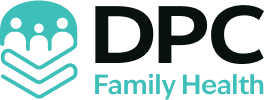TL;DR:
- Prevalence:
- Stroke: 795,000 annually, mainly older adults.
- Epilepsy: 1 in 100 Americans affects all ages, more in the elderly.
- Parkinson’s: Nearly 1 million, primarily over 60.
- Alzheimer’s: Increasing with age, mainly seniors 65+.
- Common Symptoms:
- Epilepsy: Seizures, convulsions.
- Alzheimer’s: Memory loss, confusion.
- Parkinson’s: Tremors, rigidity.
- Diagnosis:
- Tests: EEG, MRI, cognitive tests.
- Treatments: Anti-seizure medications for epilepsy, Levodopa for Parkinson’s, cognitive therapy for Alzheimer’s.
- Direct Primary Care Benefits:
- Affordability, personalized attention, proactive care.
The question “Are Neurological Disorders Common?” is a great starting point for discussing the prevalence of neurological conditions worldwide. With millions affected worldwide, it’s more than you’d expect! For instance, strokes impact over 795,000 Americans each year, and around 1 in 100 live with epilepsy. That’s wild, right? In this article, we’ll dig into the numbers, breaking down who these disorders affect most and why. Whether you’re curious about how age plays a role or just want to see the stats, we have insights that might surprise you. Let’s explore if neurological disorders are more widespread than you think!
Prevalence of Neurological Disorders
Neurological disorders affect millions worldwide. Are you curious about how common they are? They often target older adults, but no age group is immune. Consider strokes—over 795,000 Americans experience them each year. That’s a huge number, right? As for epilepsy, it affects about 1 in every 100 Americans. Parkinson’s disease impacts nearly a million people in the U.S. alone. These figures emphasize the need for awareness and early action.
Let’s explore specifics by age. Older adults are more prone to these disorders. Stroke risk, for example, rises sharply with age due to factors like hypertension and diabetes. Parkinson’s usually starts around age 60 and worsens with time. Even epilepsy, seemingly a young person’s disorder, appears later in life due to age-related brain changes. It’s a reminder that age brings both wisdom and challenges.
Here’s a quick view of prevalent neurological disorders:
| Disorder | Prevalence | Population Affected |
|——————–|————————–|——————————|
| Stroke | 795,000 annually | Primarily older adults |
| Epilepsy | 1 in 100 | All ages, higher in elderly |
| Parkinson’s Disease| Nearly 1 million | Mainly those over 60 |
| Alzheimer’s | Increasing with age | Seniors, particularly 65+ |
These disorders impact society profoundly. They affect families, communities, and healthcare systems. The costs are high—care expenses, productivity loss, and emotional toll. Understanding prevalence helps allocate resources, create supportive policies, and promote research for prevention and treatment. While daunting, stats encourage informed action toward a healthier future.
Common Neurological Disorders

What’s the most common neurological disorder? Headaches and migraines lead. They’re everywhere; who hasn’t had a headache? Frequent or severe headaches can be debilitating. Migraines cause throbbing pain, nausea, and light sensitivity—like a relentless storm. For those who suffer frequently, life can be heavily disrupted.
Epilepsy and stroke are also significant. Epilepsy involves sudden electrical brain activity, causing seizures. It affects 1 in 100 people at any age. It’s like an unwelcome surprise party you’d rather avoid. Strokes, however, bring sudden severe symptoms, affecting over 795,000 Americans yearly, often leaving challenges in their wake.
Alzheimer’s and Parkinson’s mostly affect seniors, complicating ageing. Alzheimer’s sneaks in, eroding memories and life’s details—a heartbreaker for families. Parkinson’s, with its telltale tremors, affects nearly a million Americans. Imagine your body in perpetual freeze tag.
Here are other notable disorders:
- ALS (Amyotrophic Lateral Sclerosis): Rare, affecting nerves, leading to muscle weakness.
- Multiple Sclerosis (MS): Affects the central nervous system, causing fatigue and mobility issues.
- Dementia: This leads to memory loss and cognitive decline.
- Trigeminal Neuralgia: Intense facial pain triggered by simple activities.
- Fibromyalgia: Known for widespread pain and fatigue, making daily tasks heavy.
Understanding these disorders empowers us to support those affected.
Risk Factors and Causes of Neurological Disorders
Are genetics important in neurological disorders? Absolutely. Some are predisposed because of their DNA. Epilepsy and ALS often have genetic roots. It’s like inheriting a code that might act up. While you can’t choose your genes, knowing your history helps in prevention.
Lifestyle and environment also play roles. Diet, smoking, and exercise can impact brain health. Pollution and injuries add risk, like playing Jenga with each unhealthy choice removing a block from stability.
Consider lifestyle impacts:
- Smoking
- Poor diet
- Excessive alcohol
- Lack of exercise
- Chronic stress
Making smart choices can significantly help. Why not trade a doughnut for a walk? Your neurons will appreciate it!
Symptoms of Common Neurological Disorders

Neurological symptoms are widespread and varied. From debilitating headaches to sudden seizures, symptoms can shock. Memory loss might make names or places hard to recall. Muscle weakness can turn simple tasks into challenges.
Migraines are headaches intensified, with pain, nausea, and noise/light aversion. Parkinson’s is about tremors and rigidity, a discord in the body’s tune. Such symptoms creep up, complicating daily life.
Here’s a rundown of other disorder symptoms:
- Epilepsy: Seizures, loss of consciousness, convulsions.
- Alzheimer’s: Memory loss, confusion, task difficulty.
- ALS: Muscle weakness, twitching, speech issues.
- Multiple Sclerosis: Fatigue, numbness, coordination loss.
- Dementia: Cognitive decline, language issues, disorientation.
- Trigeminal Neuralgia: Facial pain triggered by basic actions.
These symptoms highlight the disorders’ breadth and impact on individuals and communities, underscoring the need for understanding and awareness.
Diagnosis and Treatment Options for Neurological Disorders
How do doctors diagnose neurological disorders? It involves exams, imaging tests like MRI or CT scans, and sometimes genetic tests. Accurate diagnosis is essential, as these tests reveal the brain or nervous system’s status. Think of solving a puzzle—these tests lift the veil.
After diagnosis, treatments begin. Epilepsy and Parkinson’s benefit from specific medications. Anti-seizure drugs help manage epilepsy. Parkinson’s patients might use Levodopa for tremors. It’s like lending the brain extra support. For Alzheimer’s, cognitive therapies slow progression and improve life quality.
Therapies and lifestyle adjustments also help manage these disorders. Physical therapy boosts mobility; occupational therapy aids daily living. Diet, exercise, and stress management positively impact health. It’s about smoothing life and nurturing neurons.
| Disorder | Diagnostic Test | Treatment Options |
|———————|—————————-|—————————————|
| Epilepsy | EEG, MRI | Anti-seizure medications |
| Parkinson’s Disease | Neurological exam, MRI | Levodopa, physical therapy |
| Alzheimer’s | Cognitive tests, PET scans | Cognitive support, behavioral therapy |
Diagnosis and treatment involve high-tech tests and personalized care to improve affected lives.
Direct Primary Care in Managing Neurological Disorders

Why is direct primary care (DPC) popular? It excels at managing chronic conditions like neurological disorders. DPC simplifies healthcare, offering personalized plans. By avoiding insurance hassles, doctors can give patients more time. The result? Reduced costs and accessible care without surprise bills.
In managing neurological disorders, DPC shines by providing ongoing care coordination. Doctors monitor health closely, adjusting treatments as needed—like a healthcare partner supporting you continuously. Whether connecting with specialists or tailoring medication, DPC removes the maze from healthcare. This hands-on approach is crucial for complex conditions.
Benefits include:
- Affordability: Reduced costs enhance care access.
- Personalized Attention: Doctors understand your needs.
- Direct Access: Easy communication with providers.
- Proactive Care: Regular check-ins manage health risks.
DPC represents a fresh approach to healthcare, especially for those with neurological disorders. Its focus is on simplicity and patient care.
Final Words
Who knew neurological disorders were so prevalent? We dove into the stats, discovering just how common these conditions are. From the widespread impact of strokes and epilepsy to the growing numbers of older adults, the data was eye-opening.
But there’s hope! Direct primary care makes managing these disorders more personal and less complicated. It’s like having a healthcare buddy by your side.
With accessible care and targeted treatment, we can make life with neurological disorders a bit easier.
FAQ
Q: What are some early symptoms of neurological disorders?
A: Early symptoms can include headaches, dizziness, memory loss, and muscle weakness. Experiencing consistent or worsening symptoms should prompt a visit to your healthcare provider for a thorough check-up.
Q: What are the top 10 neurological diseases?
A: The top neurological diseases often mentioned include headaches, epilepsy, stroke, ALS, Alzheimer’s, Parkinson’s, multiple sclerosis, migraines, dementia, and spinal cord disorders.
Q: Are neurological disorders more common in adults or other age groups?
A: Neurological disorders are more prevalent in older adults. Conditions like Alzheimer’s and Parkinson’s especially affect the ageing population, contributing significantly to healthcare concerns in this group.
Q: What causes neurological disorders?
A: Causes of neurological disorders vary and include genetics, age, lifestyle, and environmental factors. Genetic predispositions and lifestyle choices, like poor diet and smoking, significantly impact neurological health.
Q: What neurological symptoms should not be ignored?
A: Symptoms you should not ignore include sudden severe headaches, chronic dizziness, muscle weakness, seizures, or memory problems. These could indicate underlying severe conditions needing immediate medical attention.
Q: How common are neurological diseases in the United States?
A: Neurological diseases are quite common. For instance, stroke affects over 795,000 Americans annually. Epilepsy impacts about 1 in 100 people. These stats highlight the extensive reach of these disorders.
Q: At what age are neurological conditions most common?
A: Neurological conditions are most common among the elderly, notably Alzheimer’s and Parkinson’s, which are significantly prevalent in older age groups, reflecting the need for targeted healthcare as people age.
Q: How long can you live with neurological disorders?
A: Longevity varies with each disorder and individual. Some, like epilepsy, are manageable long-term, while others, like ALS, may have a shorter life expectancy. Early diagnosis and treatment are crucial.
Q: Can neurological disorders be cured?
A: Many neurological disorders lack cures but can be managed with treatment. Medications, therapies, and lifestyle changes help control symptoms, improving the quality of life for those affected.

